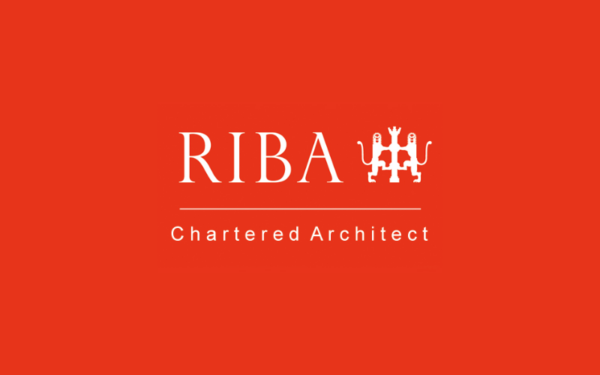RIBA Accredited Architect: What It Means
RIBA Accredited Architect: What It Means
If you’re thinking about commissioning an architect, then you will undoubtedly want to ensure you’re in safe hands. Whether it’s your home or a commercial building, anywhere you spend a lot of time should be as spacious, pleasant, comfortable, and practical as it can possibly be. And architectural design plays a critical part in this.
One of the most reliable ways to ensure you’re in the best hands is to look for professional accreditation. When searching for an architect, you’re going to come across the ‘RIBA’ logo on websites, and the letters after practitioners’ names. But what is RIBA, and what does it mean to be a ‘RIBA’ Chartered architect?
This guide outlines what RIBA accreditation might mean for you and your building project. From what RIBA stands for to what it takes to become a RIBA Chartered Architect and more, read on to find out all about the importance of RIBA accreditation.
What is ‘RIBA’?
RIBA stands for the Royal Institute of British Architects. It is both a professional membership body and charity that strives for the highest quality in architecture.
RIBA was first established in 1834, and moved to its current location in Portland Place, London in 1934. It was awarded a Royal Charter in 1837, opening a public architectural gallery at its headquarters in 2014. The first two international offices – in Shanghai, China and Sharjah in the United Arab Emirates – opened in 2019.

From the start, RIBA’s aim has been to encourage the acquisition of both artistic and scientific architectural knowledge, and to advance the profession. As RIBA receives no government funding, it relies on membership fees, sponsorship, and charitable operations. There are currently around 52,000 members.
RIBA’s operations revolve around a framework of its Royal Charter, Byelaws, and Regulations. These are updated as regularly as required, with the latest updates coming into force in 2025.
What is a RIBA Chartered Architect?
The title ‘architect’ is protected by law in the UK, under Section 20 of the Architects Act 1997. It can only be used in business or practice by someone who has had the education, training and experience needed to join the Architects Register and become an architect.
The Architect’s Registration Board is the Governing body for all registered Architects in the UK. If you commission an Architect who is also accredited by RIBA, you can be confident in your choice. A RIBA Chartered Architect must have fulfilled the strict criteria required for accreditation. RIBA requires its chartered members to deliver excellence, in terms of both design and service.
Let’s take a closer look at what RIBA requires of its members, and what their accreditation means for an architect.
RIBA accreditation requirements
To become a RIBA Chartered Architect, members must meet stringent eligibility standards and adhere to both RIBA and ARB’s Codes of Practice. These vary according to the qualifications held and country of residence. A qualified architect will have trained and/or received appropriate stage qualifications (RIBA Part 1, 2 and 3) and experience over a 7-8 year period.
Alternatively, they can be full members of one of a dozen international architectural institutes, such as the American Institute of Architects. If none of these apply, they might also be able to enter via the Membership Eligibility Assessment Panel instead.
What RIBA Accreditation means
An architect who is a RIBA chartered member demonstrates a strong commitment to the highest possible standards, in terms of ethics as well as professional practice. This is why ARB and RIBA accreditation is respected globally.
RIBA Chartered Architects are equipped with the latest knowledge and skills to help them excel. They may also be involved in networking, innovation, driving change, and even showcasing their work to the worldwide architectural community. All this helps a RIBA accredited architect to truly appreciate what architecture can do to change lives, both on an individual and a societal level.
RIBA also has in place a Code of Professional Conduct. This sets out the strict professional practice (“gold”) standards required of all institute members. Like Architecture:WK, practices also may be involved in setting the service standards expected from a “gold standard” architectural company.
Benefits of RIBA Accreditation
There are numerous benefits to working with a RIBA accredited architect.
- All RIBA accredited architects are firmly committed to excellence
- They work in as ethical a manner as possible
- Every RIBA chartered architect provides a high level of service to clients
- They are easily recognised due to the RIBA letters after their name
- Members can also use the RIBA crest and the title-chartered architect
- RIBA accredited architects engage in continuing professional development
- They follow the RIBA Code of Professional Conduct and must carry Professional Indemnity Insurance
- RIBA chartered members can be found in the public directory
- They have a requirement to continue their Professional Development to ensure that they maintain up to date knowledge standards regarding Building Regulations, sustainability, construction details and design standards.
Why Hire a RIBA Accredited Architect?
If you want to get the very best out of your consultant, then hiring a RIBA accredited Architect gives you all the assurance you need.
Do so and you can be confident that they’re ethical, fully qualified, experienced, committed to both the profession and the highest standards, and will provide the best possible level of service.
Architecture:WK is a RIBA Chartered Teddington architect. Our experienced architects can guide you through the different processes of designing an extension, renovation, or building, the planning process, building regulations, Principal Designer Role, dealing with structural engineers and party wall matters and help you deliver the beautiful project you are aiming to achieve.
Get in touch today for more information.



